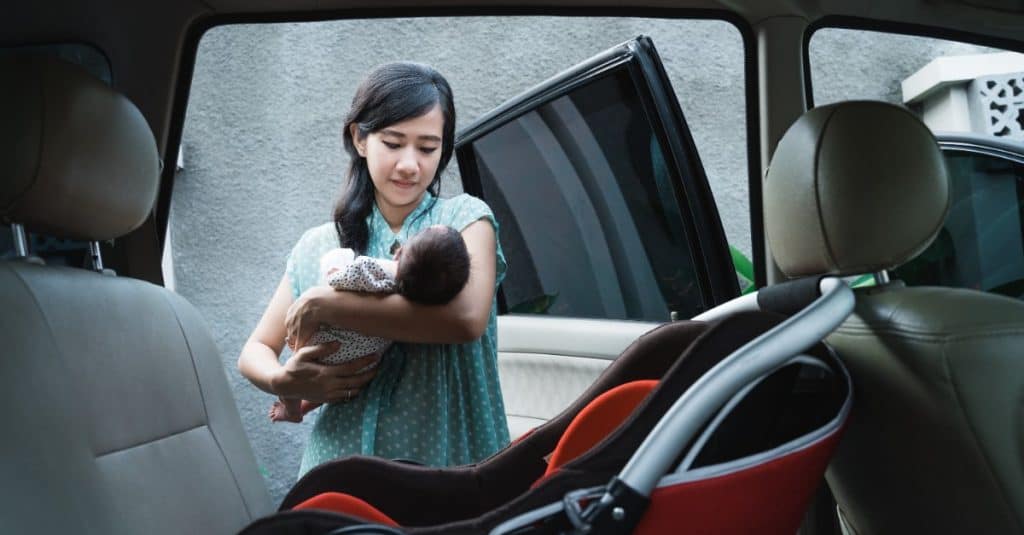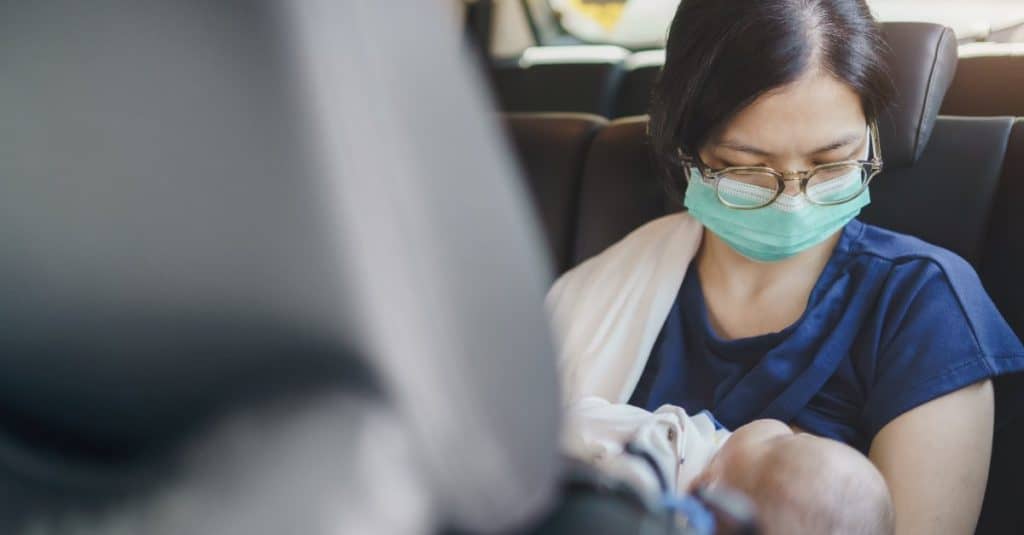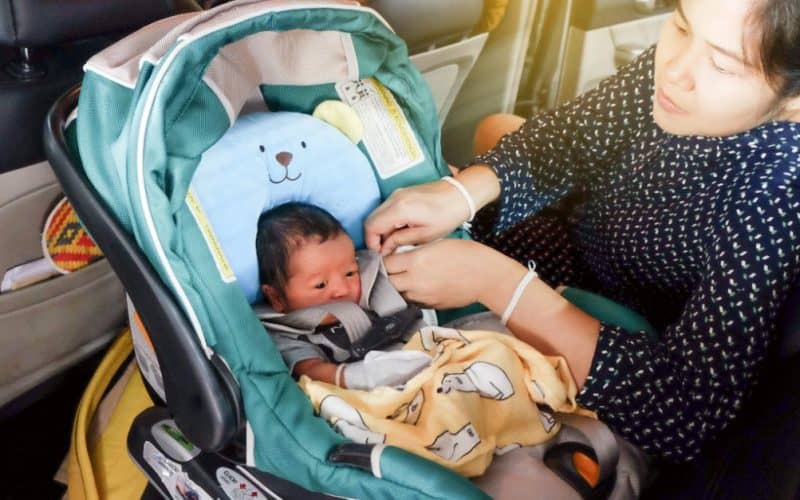A new baby’s arrival is much cause for celebration and joy. Family and friends are usually eager to meet the new little bundle of joy. However, with loved ones being spread out in different geographical locations it becomes a challenge to share in the celebration.
Although video chatting makes it easier to stay connected, there is nothing quite like meeting in person and holding the new baby in your arms. Therefore, traveling to visit your loved ones may be a viable alternative.
However, as you prepare to visit family and friends, it is important to determine when it is safe for a newborn to travel long distances, especially by car.
In general, babies can travel for two hours within a 24-hour period at two months old. It is important to consider the strain on your baby’s spine, their immune system health, and the risk of Sudden Infant Death Syndrome (SIDS) before traveling long distances.
The following are a few things to know before traveling long distances with a newborn.
How Soon Can a Newborn Travel Long Distance by Car (Factors)

-
The Two-Hour Car Rule
A baby’s spine and muscles are still under development upon birth; therefore, a lengthy car ride can strain their spine and may lead the baby to slouch, limiting airflow to the lungs.
The American Academy of Pediatrics (AAP) states that “sitting devices, such as car seats, strollers, swings, infant carriers, and infant slings, are not recommended for routine sleep…particularly for infants aged <4 months.”
Furthermore, the AAP recommends that infants less than a year-old sleep on their backs on a flat firm surface.
Since most car seats are typically in the semi-upright position, babies younger than two months of age should not ride in a car for longer than 30 minutes.
At two months, babies can ride in the car for two hours within a 24-hour period. The rule ends when a baby can sit upright and control their head and neck movement, which typically happens around three to four months of age.
During their first long car ride, observe your baby for slouching, squirming, and fussiness. You may end up needing to reduce your travel time to accommodate your baby’s needs.
-
The Baby’s Immune System
A newborn’s immune system is still developing and not yet able to fight infections. While your baby is starting to develop immunity to microorganisms around your home, they are not ready to be exposed to prolonged car rides. Initially, a 30-minute car ride should be enough exposure for your newborn.
Always clean your car’s interior after you’ve been out and about town as you don’t want to overwhelm your new baby’s system with too many foreign bacteria and viruses.
Over time, your baby’s immunity should become stronger and by two to three months, they should be resistant to most common microbes.
If at two months, your baby’s pediatrician feels their immune system is strong enough, then you can implement the two-hour car rule.
-
The Car Seat
According to the U.S Centers for Disease Control and Prevention, car seats reduce “the risk for injury in crashes by 71–82% for children, compared with seat belt use alone.”
A good car seat won’t strain your baby’s spine and will keep their airways clear. A properly installed car seat at the correct angle should keep your baby’s head from moving forward with sudden stops or regular car movement. Be sure to follow the manufacturer’s instructions.
Rear-facing car seats are mandatory for newborns and should remain so for at least up to the age of two, according to AAP guidelines. Ensure the five-point harness fits flat and tight over your baby.
Additionally, the ideal place for an infant car seat is in the middle of the back seat, unless the vehicle does not have a safe middle spot to secure it to. Never place an infant’s car seat in the front passenger seat of the car.
Car seats are precisely designed for your child’s age, weight, and height. Premature babies will require a specific car seat that meets their needs.
Never cover your baby with a blanket under their car seat straps and be sure to dress them in comfortable clothing that protects them from the straps and buckles.
Do not use a car seat if:
- It has been in a car accident, even if it was minor and the damage isn’t visible.
- It is older than 7 years.
- It has passed its expiration date. If ever in doubt, call the manufacturer.
- It has missing parts or shows signs of wear and tear.
If ever in doubt about your car seat’s proper installation, attend a local safety class or demonstration. In some locations, your local fire station may conduct free car seat inspections.
-
What You’ll Need for a Long Car Trip With a Newborn
Once your baby meets the physical and health criteria to go on a long car trip, there are things you should prepare for and items you will need to pack with you to make your family’s experience more enjoyable.
Consider Traffic Before Departing
Determine your travel time and traffic conditions for your planned departure time. Take into account the number of stops you may need to make with your baby onboard and the 2-hour car rule, if it applies.
Observe Your Baby During Your Travels

Have an adult sit next to your baby or install a backseat mirror to ensure your baby is doing well during the car ride.
If traveling alone, you may need to stop every 20 minutes or so to check on them. Be sure to do so in a safe, well-lit area.
Check your baby for overheating and ensure they’re breathing regularly. Keep blankets and plush toys away while they sleep.
Consider a Travel System
A travel system is a carrier with a base that attaches to the car’s seat. The carrier fits snugly onto the base and detaches easily to be used in a stroller.
Or you can select a compact stroller that folds easily. Be sure your baby can be strapped securely with the harness.
Account for Feeding and Diaper Changes
The frequency and number of feeding sessions will depend on your baby. Be prepared to stop often.
Be sure to take a cooler with bottles prepared with baby formula or breast milk.
Allow enough time for your baby to digest their meal and burp thoroughly, otherwise, you may find yourself having to stop again to clean up their spit.
Change your baby’s diaper while you are stopped. You do not want your baby to develop diaper rash during your trip. Consequently, avoid cloth diapers during your journey.
Prepare an Overnight Bag and a Baby First Aid Kit
Your baby’s overnight bag should contain all their essentials, such as:
- Extra disposable diapers and wipes
- Extra clothes
- A changing pad
- Diaper rash cream
- Cleaning supplies and plastic bags for dirty diapers
- Breastfeeding pillow
- Blanket
- Wash items for bath
- Toys
- Pacifier
- Teething items, if necessary
- Manual breast pump, if the mother is breastfeeding
Your baby’s first aid kit should include baby Tylenol, nail clippers, and a thermometer.
Install a Window Screen
Window screens are typically inexpensive and easy to install. A window screen will help your baby sleep, avoid fussing by preventing the sun from getting in their eyes, and will prevent the baby from overheating when the sun shines directly on them.
Pack Your Baby’s Bassinet
Your baby’s bassinet will provide a safe, familiar place for them to sleep once you arrive at your destination.
If you are staying at a hotel, some have rooms available with cribs, but they are usually limited. Plus, you may find it more practical to have a clean place for your baby to sleep.
Pack Your Medical Insurance or Health Card
Ensure your and your baby’s medical information is up to date before going on your trip.
Be Prepared with Documents if Traveling Across International Borders
If you are planning to travel across international borders, you may want to pack your passports, your baby’s birth certificate, and in some cases, your vaccination cards.
Additionally, some countries require a letter from the other parent if only one is traveling with their baby to ensure they are permitted to travel alone internationally.
Final Thoughts
It is entirely normal to want to share the good news of your newborn’s arrival with your loved ones. However, in your desire to share your happiness, you may find yourself wanting to travel with your little one.
Knowing when it is safe for your new baby to travel is of utmost importance in keeping them healthy and safe. Additionally, you must keep in mind travel preparations and items to take along with you to ensure your family has an enjoyable journey.
